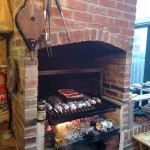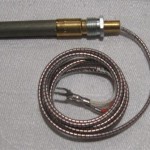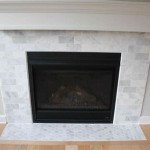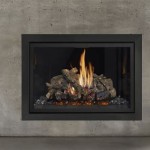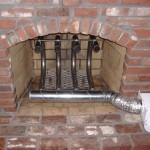DIY Faux Fireplace Mantel: Adding Charm and Character to Your Home
A fireplace often serves as the heart of a home, providing warmth, ambiance, and a focal point for gathering. However, not all homes are equipped with a functional fireplace. Installing a traditional fireplace can be a costly and complex endeavor, often requiring significant structural modifications. A DIY faux fireplace mantel offers an accessible and aesthetically pleasing alternative. This project allows individuals to introduce the charm and visual appeal of a fireplace without the need for extensive construction or a live flame. The following outlines key considerations and steps involved in crafting a successful DIY faux fireplace mantel.
Planning and Design Considerations
The initial stage of creating a faux fireplace mantel involves careful planning and design. This includes determining the desired style, dimensions, and placement of the mantel. The architectural style of the home should inform the design choices. A modern home might benefit from a sleek, minimalist mantel, while a traditional home may call for a more ornate and detailed design. Consider the existing décor and color palette of the room to ensure the mantel complements the overall aesthetic. It is beneficial to create a sketch or use design software to visualize the final product before beginning construction. Accurate measurements of the intended space are crucial for ensuring the mantel fits properly and proportionally within the room. Consider the height of the ceiling, the width of the wall, and the surrounding furniture when determining the dimensions of the mantel.
The materials used for the mantel will significantly impact its appearance and durability. Common choices include wood, MDF (Medium-Density Fiberboard), and reclaimed lumber. Wood offers a natural and warm feel but can be more expensive and require more specialized tools to work with. MDF is a cost-effective and versatile option that can be easily cut, shaped, and painted. Reclaimed lumber provides a unique and rustic aesthetic, but may require more preparation and cleaning. Consider the desired finish of the mantel when selecting materials. If a painted finish is desired, MDF or a softwood like pine would be appropriate. If a stained finish is preferred, a hardwood like oak or maple would showcase the natural grain of the wood. Safety is a prime concern. Ensure all materials are properly treated and sealed to prevent moisture damage and potential fire hazards, especially if the mantel will be placed near a heat source. If the plan includes placing candles or other decorative items that produce heat, select materials that are heat-resistant in nature and are placed far enough away so as not to degrade the materials of the mantel. Consider the projected weight the mantel can support. Heavier decorative items may require the use of more durable materials, along with additional support from wall-mounted brackets.
Before committing to a design, review building codes and safety regulations, as certain areas may require adherence to specific regulations regarding structural modifications or fire safety. Although this is a faux fireplace, it is still necessary to consider potential hazards posed by nearby electrical outlets or other utilities. It is generally advisable to seek guidance from qualified professionals if there are any uncertainties regarding structural integrity or safety concerns. Obtain any necessary permits from local authorities before commencing any construction projects that may require them.
Construction and Assembly Process
Once the design has been finalized and the materials have been acquired, the construction phase can begin. Precise cutting and assembly are essential for achieving a professional-looking result. Use accurate measuring tools and cutting techniques to ensure all pieces fit together seamlessly. A miter saw is useful for creating accurate angled cuts, while a jigsaw can be used for creating curved or intricate shapes. Pre-drilling pilot holes is recommended before driving screws to prevent the wood from splitting. Use wood glue in conjunction with screws or nails to create strong and durable joints. Clamps can be used to hold pieces together securely while the glue dries. If using MDF, be sure to use screws designed to work well in that material, or you may run into problems with the screw not holding correctly. Take your time when assembling the mantel to avoid mistakes that could compromise the structural integrity or appearance of the finished product. Regularly check the alignment and squareness of the pieces as you assemble them. Refer to the design plans frequently to ensure you are following the correct steps and measurements.
The construction process will vary depending on the complexity of the design. A simple mantel may consist of a few basic pieces of wood that are joined together to form a shelf and a decorative surround. A more elaborate mantel may involve multiple layers of molding, intricate carvings, and decorative accents. Consider using prefabricated moldings and trim to add detail and visual interest to the mantel without requiring extensive woodworking skills. These moldings can be easily cut to size and attached to the mantel with glue and nails. When working with power tools, always wear appropriate safety gear, including eye protection, ear protection, and a dust mask. Work in a well-ventilated area to avoid inhaling harmful fumes or dust. Follow the manufacturer's instructions for all tools and materials. In situations where you are unsure how best to proceed, research further or seek help from an experienced friend or professional contractor.
Once the mantel has been assembled, it can be attached to the wall. Use a level to ensure the mantel is perfectly horizontal before securing it to the wall. Locate the wall studs and use screws or nails to attach the mantel directly to the studs for maximum support. If wall studs are not accessible, use wall anchors or toggle bolts to provide additional support. Consider the weight of the mantel and any decorative items that will be placed on it when selecting the appropriate fasteners. Conceal the screws or nails with wood filler or putty and sand smooth. This will create a seamless and professional-looking finish.
Finishing and Decoration
The finishing stage is crucial for enhancing the appearance and protecting the mantel. This encompasses sanding, priming, painting, staining, and sealing. Proper preparation is key to achieving a smooth and durable finish. Use fine-grit sandpaper to smooth out any rough edges or imperfections. Apply a coat of primer to the mantel before painting or staining. Primer helps to create a uniform surface and improves the adhesion of the paint or stain. Choose a high-quality paint or stain that is suitable for the type of material used to construct the mantel. Apply multiple thin coats of paint or stain, allowing each coat to dry completely before applying the next. This technique helps to prevent drips and runs and ensures a more even finish. Consider using a brush, roller, or spray gun to apply the paint or stain, depending on the desired effect.
Decorative accents can be added to further enhance the appearance of the mantel. These may include corbels, moldings, trim, or decorative hardware. Corbels are decorative brackets that provide visual support and add architectural interest to the mantel. Moldings and trim can be used to create intricate patterns and details. Decorative hardware, such as knobs, pulls, or hinges, can add a touch of elegance or character to the mantel. Consider the existing décor of the room when selecting decorative accents. Choose accents that complement the overall style and color palette of the room. Secure decorations with wood glue or nails, and use wood filler to fill any gaps or imperfections.
Once the mantel has been finished and decorated, it can be styled with various decorative items to create a focal point in the room. Consider using candles, vases, picture frames, or books to create a layered and visually appealing display. Arrange the decorative items in a balanced and symmetrical manner to create a sense of harmony. Use different heights and textures to add visual interest. Consider the scale of the decorative items in relation to the size of the mantel. Avoid overcrowding the mantel with too many items. A simple and understated arrangement can often be more effective than a cluttered one. Regularly update the decorative items on the mantel to reflect the changing seasons or your personal style.

Easy Diy Faux Fireplace And Mantel Zucchini Sisters

Faux Fireplace Mantel Surround

How To Build A Mantel 40 Bucks Faux Fireplace Diy

Diy Faux Fireplace For Under 600 The Big Reveal Bless Er House

Diy Faux Fireplace Mantel With Tile And Brick

5 Diy Faux Mantel Ideas Stow Tellu Fireplace Mantels

Diy Faux Fireplace Mantel Tutorial Grace In My Space

Diy Faux Fireplace Mantel Rebecca Propes Design

Diy Faux Fireplace Mantel From An Old Bed Love Of Family Home

How To Turn A Bookshelf Into Faux Fireplace Mantle Miss Mustard Seed S Milk Paint

